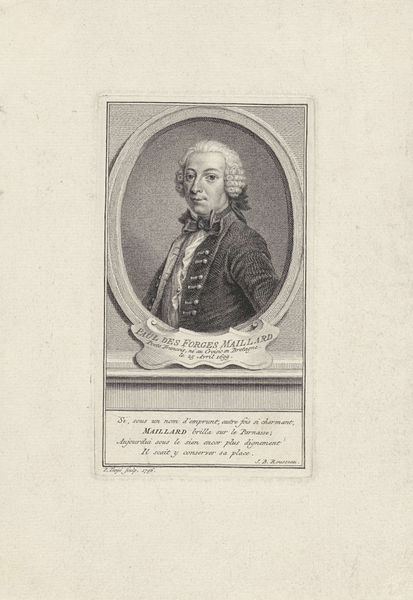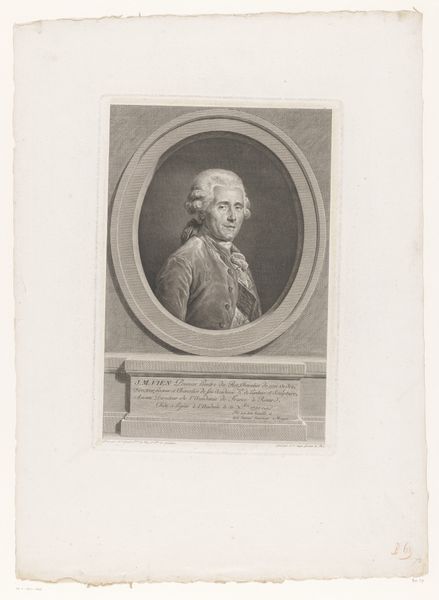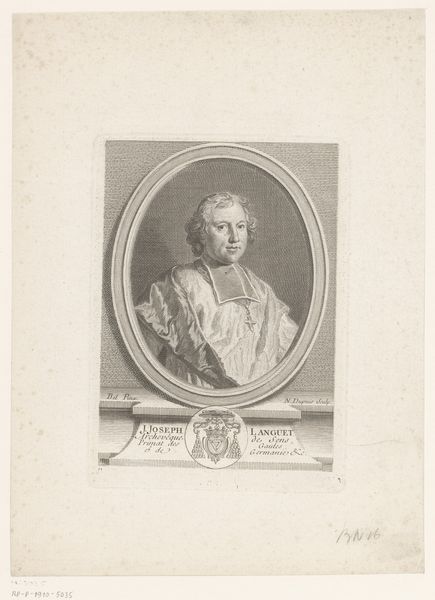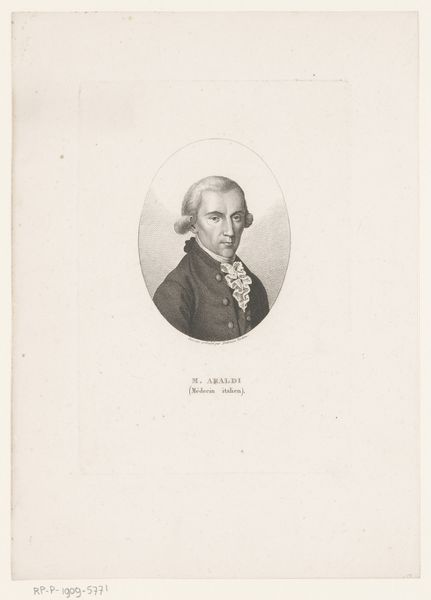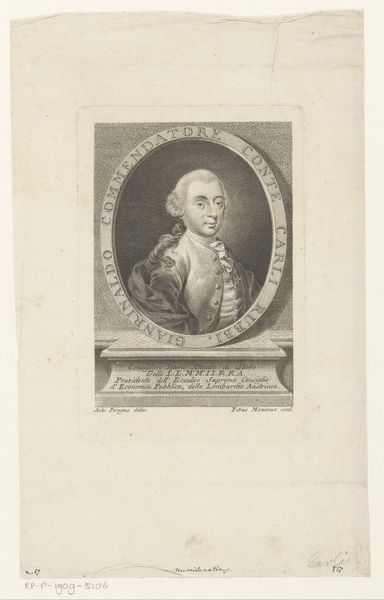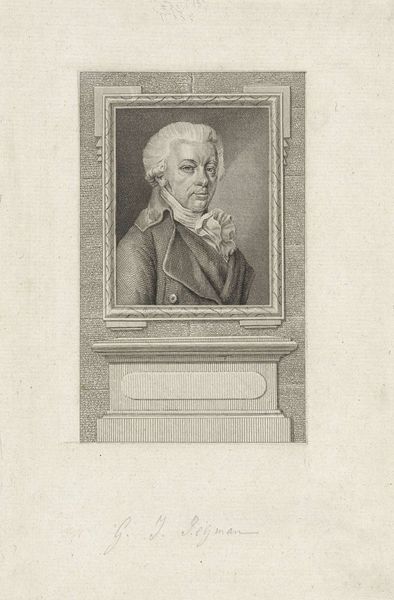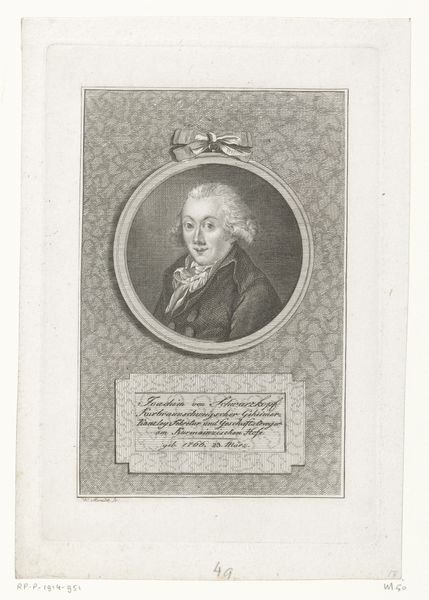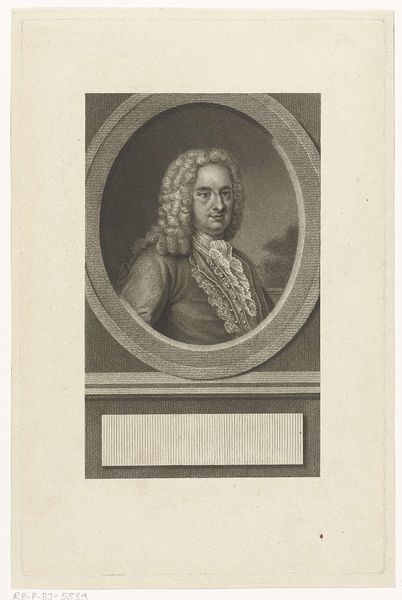
print, engraving
#
portrait
#
neoclacissism
# print
#
old engraving style
#
historical photography
#
historical fashion
#
history-painting
#
engraving
Dimensions: height 237 mm, width 178 mm
Copyright: Rijks Museum: Open Domain
Editor: Immediately striking, isn't it? A somber tone, almost austere, conveyed through what looks to be a delicate engraving. Curator: Indeed. What we're observing here is a print, specifically an engraving, depicting Willem I Frederik, King of the Netherlands, created sometime between 1790 and 1849. The piece is currently held at the Rijksmuseum. Editor: Engravings are laborious. Consider the artisan meticulously carving lines into a metal plate. Each stroke deliberate, forcing an appreciation of form, even in the face of monarchy. Curator: Absolutely. The medium lends itself perfectly to the Neoclassical style— that precision, the clarity of line. Note how the circular frame and its containing rectangle create an inner geometric space. There's a carefully calibrated tension between the portrait's inherent naturalism and the print's geometrical artifice. Editor: And think of the material cost, and its connection to social context! Metal engraving plates required skilled metalworkers, impacting the cost of production. This raises questions about the intended audience. Were these widely distributed, or specifically for an elite? Curator: It's also about how meaning is constructed. The framing is almost an act of deconstruction. It reduces the man to components of ideal beauty, almost as a classical bust within the reach of the Neoclassical art philosophy. Editor: Beyond philosophy, it underscores an intense manipulation of materials: acid etching the image to create a masterplate for reproducing numerous prints on paper. Craft becomes key. And how might each impression affect the availability and worth? Curator: The uniformity allows him to take on near iconic qualities. Every subtle decision, even the angle of light across his face, reinforces established ideas. The symmetry conveys notions of reason and control, integral to Neoclassical themes. Editor: Understanding printmaking challenges elitist narratives around ‘high’ art. These engravings allowed a kind of democratisation, through their reproducibility. What narratives were amplified with these materials in those times? Curator: Well, studying it helps us see these intended symbolic elements. Editor: Looking closer at the materiality here gives a deeper grasp.
Comments
No comments
Be the first to comment and join the conversation on the ultimate creative platform.
